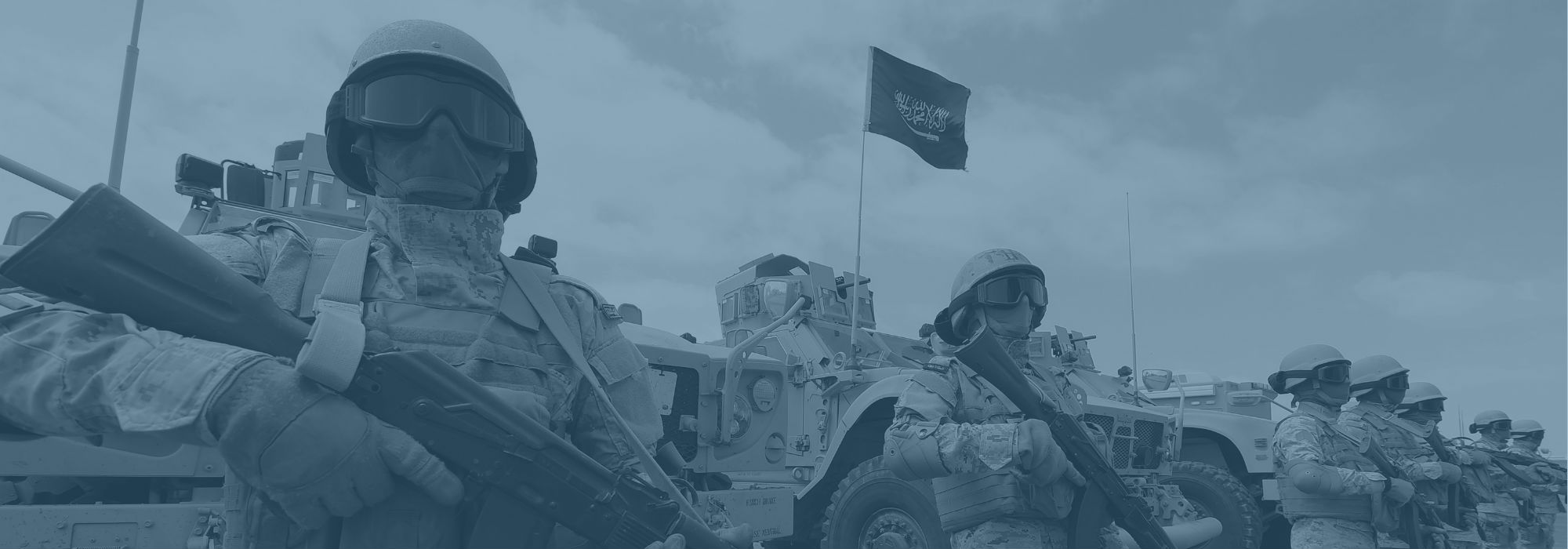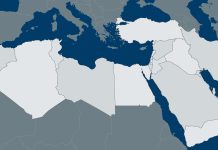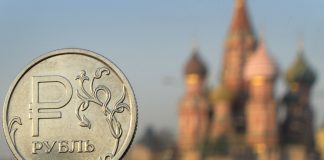By Jacob L. Shapiro
Summary Recent attacks in Saudi Arabia show an expansion of IS strategy in the kingdom. Saudi Arabia and the Islamic State share foundational similarities, and IS may take advantage of Riyadh’s financial troubles and overextended military to punish the royal family for its religious hypocrisy.
Much has been made of the tactical defeats the Islamic State has suffered on its periphery recently. The most serious of these was the retreat from Palmyra on March 28, but U.S.-backed Iraqi forces are also operating against IS in Hīt in the south near Ramadi and al-Nasr, a small village on the road to Mosul. While we track these developments closely, none have yet caused us to change our forecast for 2016, which predicts that IS will continue to be the single largest force in the Syrian-Iraqi theater. Further, recent events in Saudi Arabia could indicate our expectation that IS would expand its activities into the kingdom is coming to fruition.
On April 2, an improvised explosive device (IED) went off in a police station in Ad Dilam, a small town about 100 km (62 miles) south of Riyadh, according to the Saudi Interior Ministry. One person was killed and three police cars were damaged in the explosion, which was claimed by Wilayat Najd, a self-proclaimed province of the Islamic State. Then on April 5, Saudi-owned Al Arabiya reported that a Saudi security officer and colonel was assassinated in the area of al-Quwayiyah, about 171 km west of the capital. IS also claimed this assault.
These attacks were carried out by official Islamic State affiliate provinces. They are by no means unprecedented, though the fact that they occurred close to Riyadh and involved Saudi government targets instead of Shiite mosques is slightly unusual. Wilayat Najd has claimed responsibility for multiple attacks on Shiite mosques in Saudi Arabia, and the other Saudi IS affiliate, Wilayat Hijaz, claimed responsibility for an attack on an elite Saudi security force last August. And last month a retired Saudi security official was assassinated, but that was in Jizan province, close to the border with Yemen, where IS maintains a fairly active presence. There have been a few other incidents in the Saudi heartland – Saudi police forces found a suicide bomb-making factory in Riyadh in September, and in August there was a drive-by shooting against a police patrol in Jeddah. But by and large, IS attacks against Saudi Arabia have targeted Saudi Shiites or Saudi security forces either engaged in or on the border with Yemen.
These attacks fit within IS’ strategy of using sectarianism to destabilize the Saudi regime. Shiites make up roughly 5 percent to 15 percent of the Saudi population and most of those Shiites live in the oil-producing regions to the east. IS was born of the sectarian conflicts still raging in Iraq and Syria – the power vacuum left by such competition is an ideal place for IS to set up shop. IS would love to follow a similar blueprint in Saudi Arabia. That attacks may be spreading toward the interior and are more frequently targeting the regime could undermine the legitimacy of the kingdom. It also allows IS to stoke Sunni fears and eliminates resistance to its operations.
Of all the places IS is attempting to expand, Saudi Arabia is the most attractive and potentially the most dangerous for the rest of the region. For one thing, the Saudis are already spread thin, both from a military and economic perspective. From the military perspective, that may seem a strange statement to make, considering Saudi Arabia has purchased over $100 billion worth of American arms in the past five years, with the most recent deal agreed to on Nov. 16. That deal was reportedly worth $1.29 billion and includes more than 10,000 advanced air-to-surface munitions that the Saudi military is using in Yemen.
And yet, while Saudi Arabia’s military is well stocked with plenty of advanced weapons and some of the best technology in the world, it is still a small desert country. Saudi Arabia’s population is only about 28 million – slightly larger than Yemen and Syria and just smaller than Iraq. In terms of population, Saudi Arabia is closer in size to tiny Israel than to the Middle East’s other regional powers like Turkey and Iran. Weapons are only useful if you have the manpower to use them, and Saudi Arabia’s roughly 200,000 armed forces cannot sustain conflicts in Yemen, Syria, Iraq and Bahrain at the same time.
To cope with the challenges emanating from its northern border with Syria and Iraq, the Saudis have done what they always do – thrown their oil money at the problem. Hoping to score a victory against Iran by toppling Syrian President Bashar al-Assad, Saudi Arabia poured money into the Syrian civil war, supporting various radical jihadist groups and contributing directly to the rise of groups like IS and Jabhat al-Nusra (a branch of al-Qaida) in Syria. But Saudi Arabia is no longer in a strong enough economic position to continue to spend this way. Geopolitical Futures has looked in depth at Saudi Arabia’s financial position and found it wanting.
However, there is a deeper level to the Islamic State’s desire to expand into Saudi Arabia. Saudi Arabia is at its core simply an earlier iteration of the Islamic State. The kingdom’s earliest roots began with an 18th century alliance between Muhammad ibn Abd al-Wahhab’s teachings of a strict adherence to a particular interpretation of Shariah law and the sons of Saud, a small dynasty in central Arabia claiming territory through armed conquest. The movement became known as Wahhabism, and the state that governed by its principles became Saudi Arabia in 1932. This was an indigenous Arab force that emphasized strict adherence to religion over any previous national, tribal or territorial designations.
Abd al-Wahhab was revolting against the Islamic orthodoxy of the Ottoman Empire. He sought to purify Islam by replacing ignorance with Shariah and the love of one’s own tribe with submission to the greater Islamic community. Writing of Saudi Arabia’s inception as a Wahhabi state, Albert Hourani said in 1962 that “its appeal however was to Islamic, not Arabic, solidarity, and in essence it claimed to be the Islamic State to which all could adhere.” It is easy to see the Saudi monarchs today, with the immense wealth their oil fields have provided them, and to forget that the core idea that led to the creation of Saudi Arabia was not wealth, but a return to the imagined piousness of Islam’s first generation.
The Islamic State’s attack on Saudi Arabia is not just an attack on the government. It is an attack on its very soul. Saudi Arabia is outwardly a very religious society. For example, women must be accompanied by men in public and must cover their faces, and punishments for crimes are derived from Shariah, including dismemberment for theft and beheading for other crimes ranging from capital offenses to using drugs. And yet the House of Saud does not live the way Abd al-Wahhab prescribed, but rather in opulence, with fancy cars and royal parties featuring alcohol and prostitutes. IS looks at Saudi Arabia and sees hypocrisy – and in that hypocrisy, it sees not just something distasteful to its own values, but also an exploitable weakness.
Outside of Syria and Iraq, IS’ threat is most potent in Saudi Arabia. Saudi Arabia’s monarchy is weak and getting weaker. Its oil wealth is located on a politically unstable fault line between Sunnis and Shiites. And its rule of Islam’s holiest sites, Mecca and Medina, is juxtaposed with the inconsistent manner in which the ruling family applies the interpretation of Islam that helped give rise to the state. There is a long way yet to go between a small IED outside a police station and IS meaningfully challenging the House of Saud – but Saudi Arabia’s weakness and IS’ desire to ruin the kingdom will only become more pronounced with time. That should give the coalition against IS significant pause.









